Log Burner Installation Cost
Last updated 16th May, 2025
Looking into the cost of installing a log burner in the UK?
This essential guide covers everything you need to know about wood burning stove installation costs in 2025.
You'll find out how much a log burner and fireplace installer cost, answers to some of the most common questions homeowners have, and much more!
If you've got a burning desire... keep reading below!
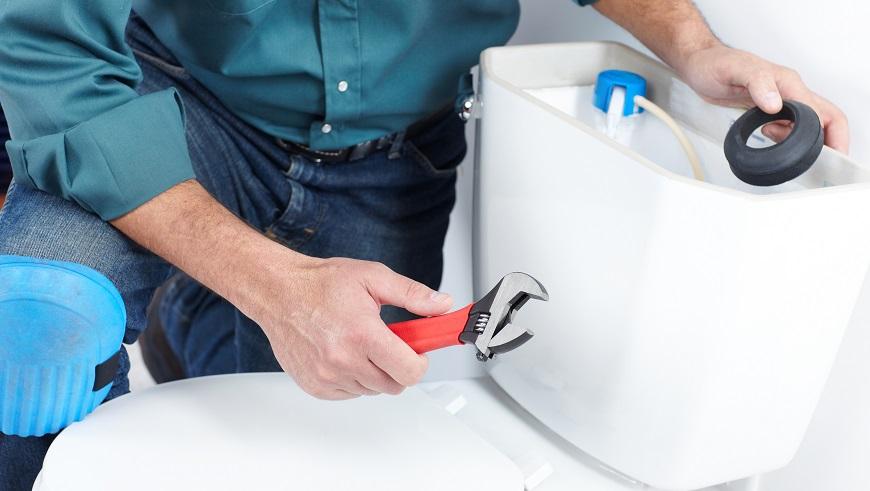
Table of contents
- How much to install a log burner?
- Additional costs of installing a log burner
- Labour cost to install log burners
- Types of wood burning stoves
- What does installing a wood-burning stove involve?
- How big should a wood burning stove be?
- Ongoing wood burning stove costs
- Life expectancy of wood-burning stoves
- Do you need a hearth?
- Chimney lining
- What are multi-fuel stoves?
- Do I need ventilation?
- What is HETAS?
- Are wood-burning stoves safe?
- DIY wood-burning stoves
- Can I have a wood-burning stove?
- Cost of removing a wood-burning stove
- FAQs
- Sources
How Much to Install a Log Burner?
The average wood burning stove installation cost ranges from £1,500 to £2,700.
However, the cost to install a log burner will mainly depend on:
- The type, style, and quality of the unit you're looking to have installed.
- Whether you have a chimney, hearth, or backplate.
- Where you're located in the UK.
Let's take a closer look at what you should expect the cost of a log burner installation to be.
Log Burner Installaton Prices
There are three types of wood burning stoves that you can choose to have installed. The table below summarises the average price range you could be quoted for each type of unit.
| Type | Avg. Cost |
|---|---|
| Convection Stove | £300 - £3,000 |
| Radiant Stove | £500 - £2,000 |
| Range Cooker | £1,000 - £5,000+ |
How Much to Install a Log Burner Without a Chimney?
One critical factor that significantly impacts log burner installation costs is whether you already have a chimney or not.
If you already have a chimney that is well maintained, then log burners cost between £1,500 and £2,700 to install.
However, how much it'll cost to install a log burner if you don't have a chimney already will be higher. On average, you should expect the installation of a chimney system to add up to £2,000 to the total cost of the project.
Additional Costs of Installing a Log Burner
The process of installing a wood-burning stove varies in every home. It’s based on your requirements and any additional equipment and renovation needed.
Here’s a breakdown of what you may need to budget for alongside the wood burner cost itself:
| Additional Costs | Average Price |
|---|---|
| Chimney sweep and liner | £950 |
| Chimney system (home without chimney) | £2,000 |
| Hearth | £200 |
| Backplate | £50 |
| Chimney cowl | £70 |
| CO detector | £20 |
| HETAS installation and certificate | £300 |
Log Burner Cost Calculator Breakdown
Individual costs to install a wood-burning stove in a two-storey house with an existing chimney: £1,700
Materials & Equipment
£1020
Labour
£595
Clean-up
£85
Labour Cost to Install Log Burners
Labour costs vary based on location and type of installation, but you can expect charges of £300 to £1,000.
The average day rates for a specialist to install a wood burner will be between £120 and £200.
Time frames are different for every project, but for a standard installation of a stove will take 1 to 2 days, whereas a full renovation can take 5 to 7 days.
A twin wall flue is used when there’s no existing chimney. It creates a chimney system to remove toxic gases from the log burner to the outside. It’s manufactured from metal piping (available in chrome or black finish) and costs around £70 a metre.
A full renovation consists of everything: chimney sweep, chimney liner, twin wall flue, hearth & stove installation, and clean-up. This will take longer and cost more.
| Installation | Time frame |
|---|---|
| Flexi flue liner | 1 day |
| Twin wall (bungalow) | 1 day |
| Twin wall (house) | 1 – 2 days |
| Full renovation and installation | 5 – 7 days |
Types of Wood Burning Stoves
The three options for wood-burning stoves have different pros and cons.
Apart from assessing the log burner installation cost, you should also check which stove best suits your home.
Convection Wood Burning Stove Cost
A convection stove will heat the air around it and uses the natural airflow of a room to circulate warmth evenly.
Budget convection stoves start from around £300 to £400, while premium models can cost up to £3,000 and beyond.
Pros
- ✔ Most efficient for larger rooms.
- ✔ Disperses heat evenly.
- ✔ Exterior of stove remains cool.
- ✔ Available in versatile designs.
Cons
- ✖ Can take a while to warm up.
- ✖ Not as hot close up as other types.
Radiant Wood Burning Stove Cost
Heat is emitted directly from the surface of a radiant stove. This type of log burner installation is a rapid way to heat up a room.
On average, the wood burner cost for a radiant stove starts at £500, but prices can rise to £2,000 for higher quality stoves.
Pros
- ✔ Often cheaper than convection stoves.
- ✔ Straightforward design.
- ✔ Heats up small spaces quickly.
- ✔ Offers immediate and intense heat.
Cons
- ✖ Only provide localised heat.
- ✖ Surfaces can become very hot.
- ✖ Doesn't distribute heat evenly.
- ✖ Little residual heat once the fire goes out.
Range Cooker Cost
As the name suggests, a range cooker is primarily a cooker, but it functions as a home heating option as well.
The cost of a range cooker is generally higher than other wood-burning stove options. Generally, prices start from around £1,000 and can surpass £5,000 for premium models.
Pros
- ✔ Can be used to cook as well as heat a room.
- ✔ Great for rustic or traditional homes.
- ✔ Retains heat for a while.
Cons
- ✖ Expensive option.
- ✖ Requires a large space for installation.
- ✖ Will need regular maintenance.
- ✖ Can take time to warm up.
What Does Installing a Wood-Burning Stove Involve?
If your home has a chimney, it might need a liner. It needs to be installed into the existing flue, as it prevents carbon monoxide (which is toxic) from entering your home by directing it outside. Your chimney may also need to be cleaned before use. This creates a great deal of dust, so your tradesperson may seal doors and use dust sheets to cover all furniture.
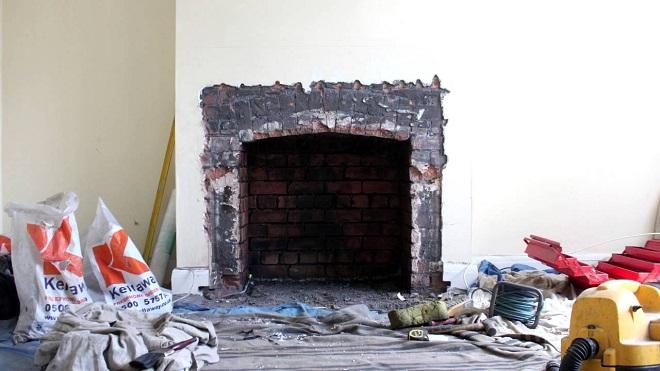
If your home has no chimney, a twin wall flue needs to be installed through a wall and will run outside the property to the roof. (Again, this will create dust and debris.) You have to inform Building Control before installation.
To apply for building control, you can fill out an application on the Planning Portal and download the correct approved document (Part J) here.
When placing your wood-burning stove, you have to keep in mind the distance of combustible materials. Most models have a guide in the instruction manual of how far away it needs to be from walls and other surfaces. A hearth will need to be installed to the floor if the stove is not being placed inside an existing fireplace recess.
After the work is complete, you may need a price from a plasterer to skim the walls if they’re damaged.
How Big Should a Wood Burning Stove Be?
Here's how you can calculate what size stove you need:
- Calculate the cubic space of the room where you're installing the stove. (Multiply the width, height and length.)
- Divide the cubic space by 14 to give you the kilowatt output the room needs.
| Kilowatt Output | Size |
|---|---|
| 4-6 KW | Small wood-burning stove |
| 7-9 KW | Medium wood-burning stove |
| 10-15 KW | Large wood-burning stove |
Other factors to consider is how well your home is insulated, whether the room is open plan, and what temperature you want the space to be.
Ongoing Wood Burning Stove Costs
Cheap log burners won’t have the same life expectancy as expensive versions, which means you may have to replace them much sooner.
They’ll only last around 2 to 6 years, mainly due to manufacturing differences:
- Cheaper log burners are made from welded steel and very thin cast iron.
- Higher-quality log burners are made from rolled steel and heavy cast iron.
Low to mid-range stoves may need a constructional hearth, but with a more expensive stove, you get away with having a non-combustible hearth.
Replacement parts for cheap log burners aren't usually available, so if it breaks, you may have a hard time fixing it if a part needs replacing.
If you’re thinking about installing a double-sided log burner, you will need to take into account the extra cost of fuelling it. These stoves can be used to heat two rooms and can have an output of over 20kW, so they’ll need more wood to burn, therefore costing more to run.
Chimney Sweeping
Chimney sweeping is not a profession of the past and is still needed in the modern-day to prevent flue fires and remove the hazard of toxic emissions. So, regular chimney sweeping will help you keep a safe and efficient fireplace and costs approximately £50 a time.
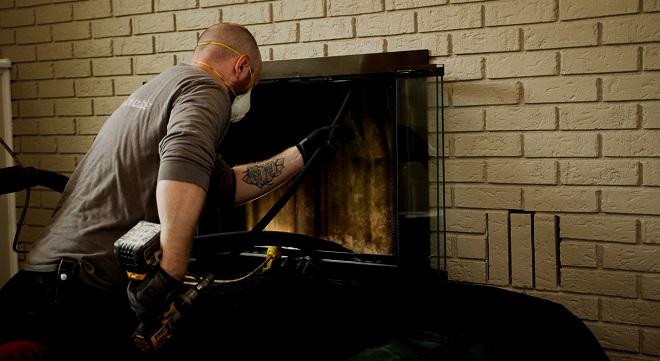
It's advised that you clean your chimney once a year, or after a long period of disuse (after summer, etc.). A good tip is to clean the chimney before a long period of disuse, too. The more often you use a chimney, the more often it will need cleaning. Here's some more information on what's involved with chimney sweeping.
Maintenance Costs
In addition to the cost of annual chimney sweeping (£50), an inspection by a certified professional is recommended at least once a year. This is usually carried out after a long period of use and costs around £40-£100.
You can self-clean the stove by removing ash when needed and cleaning the interior with a wire brush. Glass requires cleaning on a regular basis, as tar deposits can build up over time. Make sure to check for any cracks, rust, holes, or damaged seals.
Running Costs
Running costs can be non-existent if you’re able to obtain free wood within your area. However, if you need to purchase wood, here’s an idea of how much it could cost you:
| Fuel | Cost |
|---|---|
| Kiln-Dried logs | £135 per cubic metre |
| Seasoned logs | £116 per cubic metre |
| Briquettes | £150 per cubic metre |
| Wood pellets | £120 per cubic metre |
On average, stove owners use about three to four cubic metres of wood annually, although the cost of wood will depend on your location and the merchant you’re buying from. Freshly cut logs are cheaper than dried at around £100, but you won’t have a high heat output if used.
Life Expectancy of Wood-Burning Stoves
The average life expectancy for a wood-burning stove is between 10 – 20 years. This is determined by whether you’ve bought a low, mid or high-quality range stove, and also whether you’ve kept up with maintenance.
| Stove | Life Expectancy |
|---|---|
| Low-range Stove (£200 -£500) | 2-6 years |
| Mid-range Stove (£600 - £1200) | 10 – 15 years |
| High-range Stove (£1300 +) | 15 – 20 years |
Higher range stoves may even last longer than 20 years if kept clean and regularly inspected by a licensed professional.
Do You Need a Hearth?
A hearth is used to guard your home against potential fire hazards by preventing burning logs or embers from tumbling onto your floor. Therefore, wood-burning stoves have to have a hearth made of non-combustible materials, such as slate, tile and glass.

Slate hearths can cost between £60-£250. Glass can be more expensive and cost between £100-£350. Tile is the cheaper option, depending on size and style of tile, can range from £30-£100.
Depending on size and material, they cost between £70-£300.
If your stove is being placed in a fireplace recess, it'll already be sitting on a constructional hearth that's built into the floor. This type of hearth will need 150mm on each side of the stove, and 300mm in front of the stove.
If your stove is cool hearth rated, they're an exception to the rule and are suitable for 12mm superimposed hearths, which are made from manufactured slate and glass.
If you have a free-standing stove that's not being placed in a fireplace recess, you'll need a free-standing hearth which can be superimposed but has to measure 840mm by 840mm.
Chimney Lining
Chimney liners prevent toxic emissions from escaping through gaps in crumbling brickwork and ending up in your home. They also help to avoid chimney fires.
You’ll need your chimney line or re-lined if:
- You have an older home that has no clay tile liner.
- Your clay tile chimney liner is damaged.

There are three types of chimney liners available: clay tiles, metal and cast in place liners.
Cost of Clay Tile Chimney Lining
Clay tiles are cheap, so if you get a chimney relined, you’ll mostly be paying for labour at around £100 - £300 per day. Clay tiles do crack over time in heated conditions, and even if well maintained, they will need replacing.
Cost of Metal Chimney Lining
Metal liners come in stainless steel and aluminium. Stainless steel is more commonly used with wood burners. You can purchase a complete flexi-stainless steel flue lining kit for around £250; if you’re hiring an installer to complete this for you, it could cost between £100 - £300 for labour for a day’s work.
Cost of Cast-in-Place Chimney Lining
Cast-in-place liners are the most expensive. Masonry is poured down the chimney to create a fireproof, seamless liner. You can expect to pay between £1,000 and £3,000.
It’s a regulation that your installer has to comply with, and if your chimney is eroding or defective, it will need to be lined. Here's some more information about chimney lining, what the job entails and the costs involved.
Multi-Fuel Stoves
A multi-fuel stove can burn not only wood but also coal and smokeless fuel. It has a riddling plate for coal to sit on, letting air reach it from the base so the coal can ignite. Wood burns best in a firebox, where the air circulates from above.
Even though multi-fuel stoves can use multiple fuels, it's not ideal for burning wood efficiently. If your primary source of fuel is going to be wood, it'd be best to buy a wood-burning stove. But if you're planning on using wood and coal regularly, a multi-fuel stove would be a great addition to your home. There’s not much difference in price between a wood stove and a multi-fuel, and you can expect to pay between £430 and £2,200.
Do I Need Ventilation?
Yes, ventilation is vital for a stove to combust and evacuate the flue gases, too, otherwise it will not work. If there's no ventilation, the stove won't light, and smoke will empty into your home. For the smoke to empty into the chimney or flue, there needs to be an air source. Many stoves have somewhere to attach an external air supply, and can obtain kits to connect to the stove.
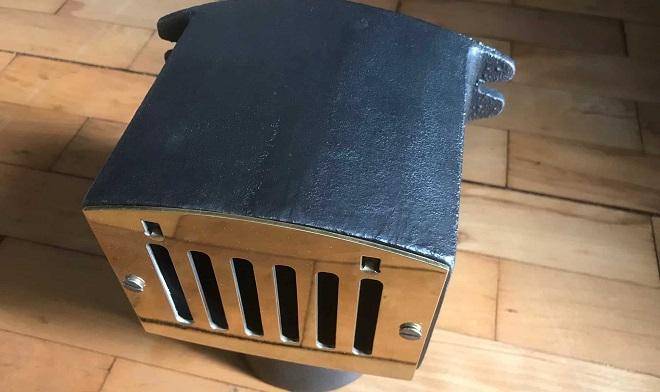
A vent, ideally, needs to be fitted near the stove and can be installed in the floor, ceiling or wall. Make sure it's placed at an angle or in a way that it can't be obstructed by debris.
What is HETAS?
HETAS (Heating Equipment and Testing Approval Scheme) are a company that will certify that work has complied with building regulations when installing wood-burning stoves. By law, you need to contact your local authorities before any installation takes place. After you have installed your stove.
Even if you have installed a stove yourself, you'll still need an inspection from HETAS for a certificate to show the stove has been installed correctly. This can cost between £120 – £300.
Are Wood-Burning Stoves Safe?
If installed correctly by a tradesperson, wood-burning stoves are perfectly safe within your home. Having a carbon monoxide detector is essential to detect if any carbon monoxide is entering your home. If this does occur, something is wrong with the installation of your stove, and it's recommended to stop use and seek the help of a professional.
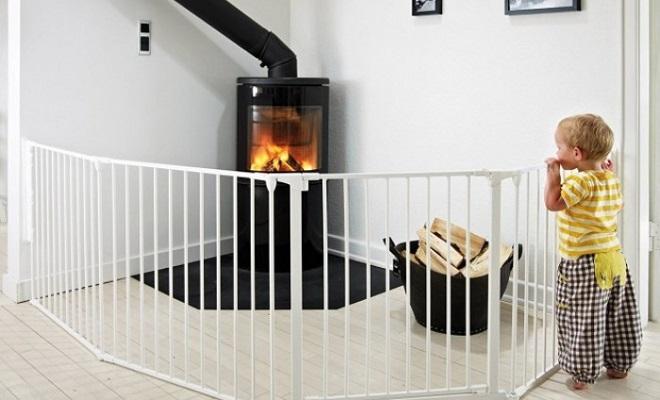
If you have small children and your stove's exterior becomes hot to the touch, purchasing a fireguard can help avoid any accidents, and cost anywhere between £10 - £100.
DIY Wood-Burning Stoves
It's possible to install your own wood-burning stove. You'll still need a certificate from HETAS to comply with Building Regulations, and you'll need to inform your local authorities before any installation or work takes place. It can cost up to £150 for an inspection visit, and prices can vary depending on the location of your home.
The fitting itself isn't difficult for an avid DIYer, and there are three main things you should consider:
- Ventilation – adequate air has to be fed to the stove to evade any build-up of toxic emissions. An 'air brick' must be installed in the same room as the stove..
- Combustible Materials – Guidelines regarding where a stove can be placed relative to combustible materials, as well as requirements on how a flue should be properly installed.
- Flue – The pathway from the stove to the outside must transport hazardous gases directly outside, and ensure there are no leakages into the home.
It’s always suggested that you hire a professional to install your stove to guarantee safety.
Can I Have a Wood-Burning Stove?
Before purchasing a stove, you’ll need to check if your home is situated in a ‘smoke controlled’ area. This means no wood can be burnt on any open fires or stoves, only smokeless fuel, such as briquettes. You can face a £1,000 fine if this law is broken.
You’ll also need to buy an authorised stove, as many stoves are exempt due to their high emissions. For all information on smoke-controlled areas and accepted appliances, visit the GOV website.
Cost of Removing a Wood-Burning Stove
You can remove a wood stove yourself. As they're usually made from cast iron, it's highly recommended you ask for help from family or friends with any heavy lifting. The actual disconnection of the stove will only take a couple of minutes:
- Remove any wood and ash inside the stove.
- Ensure dampers are closed to prevent ash escaping.
- Use lubricant around the pipe connection and wait for a minimum of ten minutes.
- Disconnect the sheet metal screw that attaches the pipe to the top/rear of the stove. Then pull the pipe away.
- You can then lift the stove and remove it from the room.
You can hire a professional to complete the removal for you, which can cost around £600 but may be safer than completing it yourself.
FAQs
Sources
https://www.gov.uk/smoke-control-area-rules
https://smokecontrol.defra.gov.uk/appliances.php/
https://www.hetas.co.uk/about-hetas/
https://www.thestoveyard.com/pages/faqs










